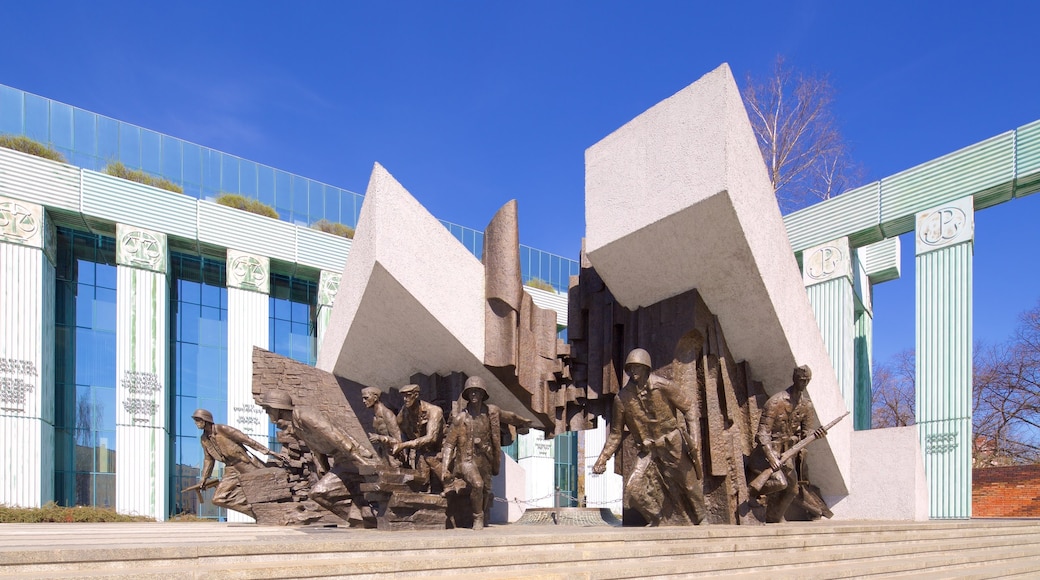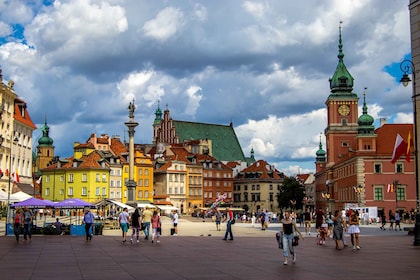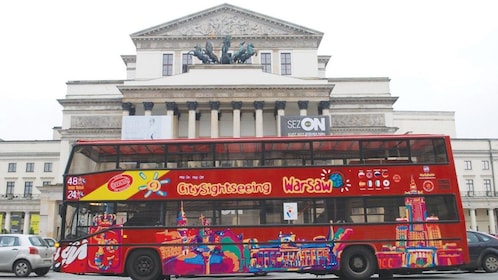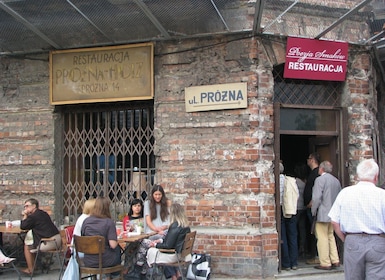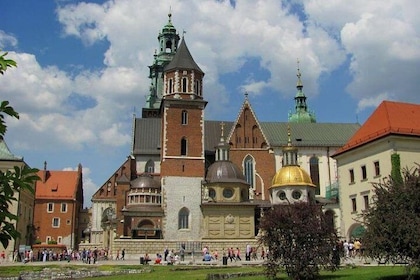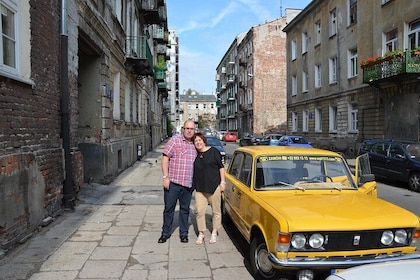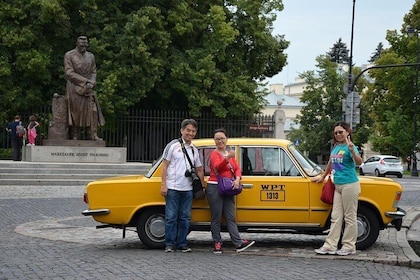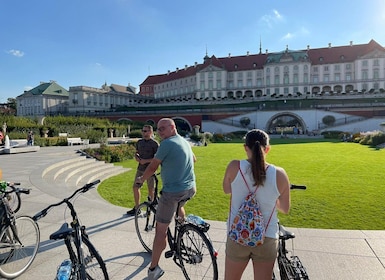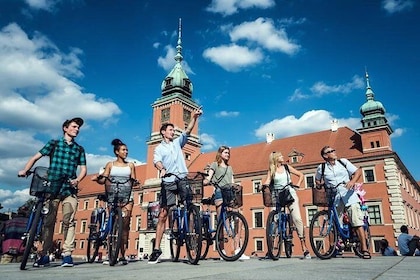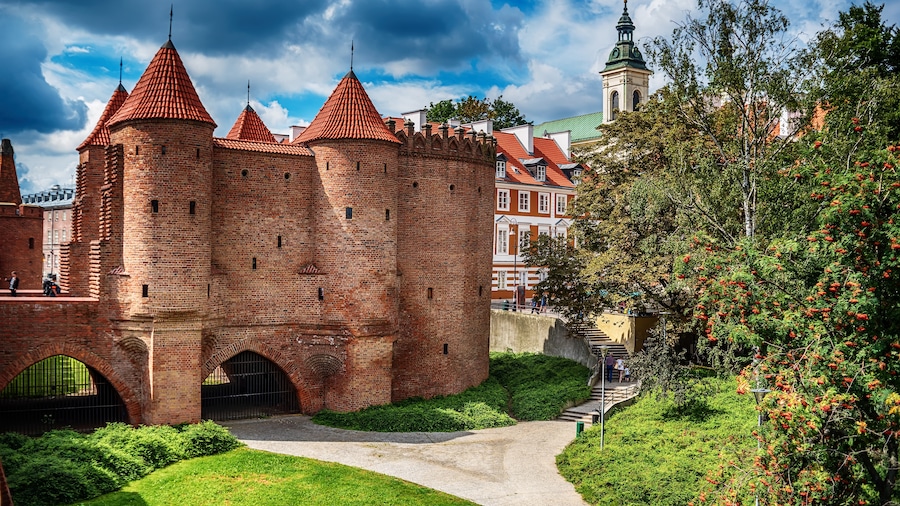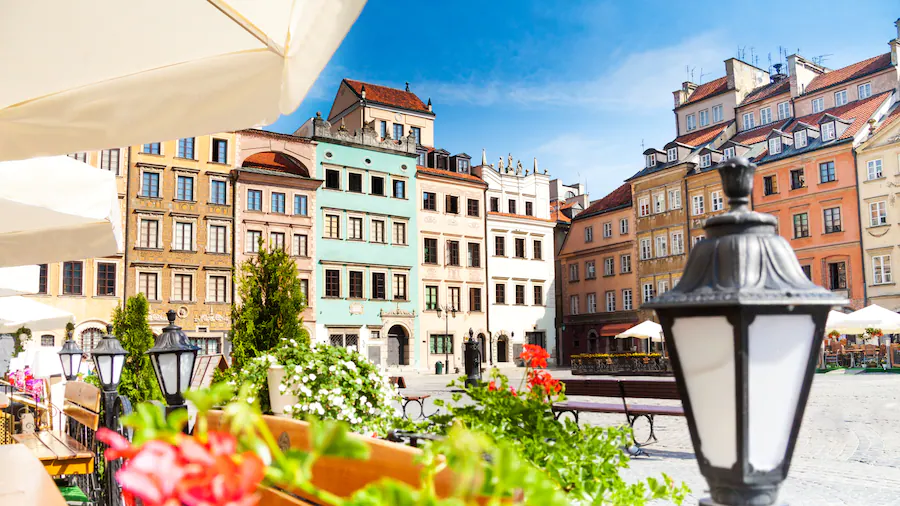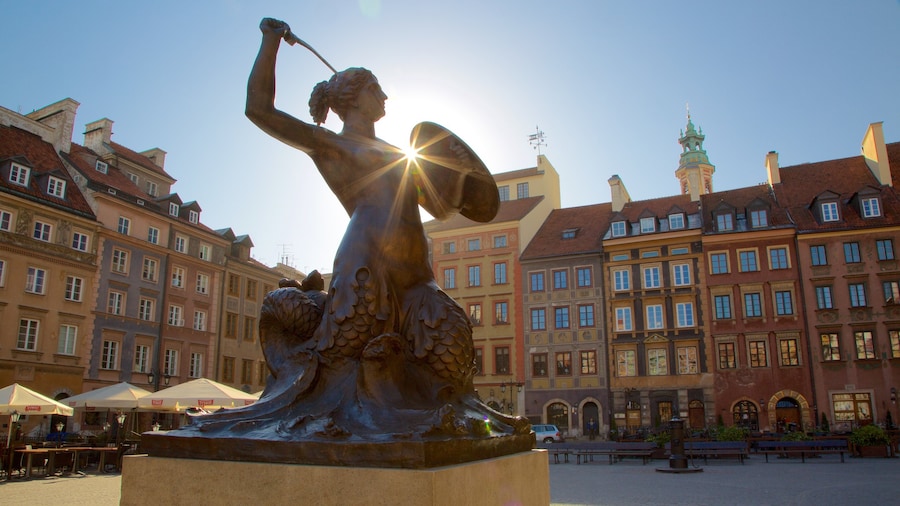Reflect on the defining moment in Warsaw’s modern history at this moving monument, a tribute to the city’s Home Army, who fought tirelessly for their city.
The Warsaw Uprising Monument brings to life the devastating events of 1944 when the Polish resistance rose up against the Nazis. Visit this multi-station monument, a haunting and strikingly realistic bronze tableau depicting Polish soldiers battling for their city.
In 1944, the Polish underground resistance, known as Armia Krajowa or Home Army, launched an offensive against their German occupiers in Warsaw. After 63 days of fighting without any outside support, the Poles were defeated. In retaliation for the insurgence, the Germans razed most of what was left of the city and deported all its remaining citizens, many of them to labor or death camps.This was a tremendously important moment in Polish history and is commemorated in a variety of ways throughout Warsaw, but none more vividly than here.
At the top of the stairs, on the south side of Krasinski Square, find the soldiers creeping warily through the ruins of streets and buildings. Some feet away, at ground level, more figures climb down manholes into the ground as a priest in robes stands guard. Walk across the street from the monument to see the place where the real soldiers entered the canals to escape the enemy.
Examine the lifelike figures of this graphic monument, which manages to communicate not just the terror and destruction of that time, but also the solidarity between the soldiers who were putting everything at stake to save Warsaw. While the monument highlights the emotional impact of this event, it doesn’t provide background information. Hear and read much more about these events at Warsaw’s Uprising Museum, located southwest of the monument near Rondo Daszyńskiego station.
To get to the Uprising Monument, take the tram to Muranów station. Be sure to stop by the Cathedral of the Polish Army while you’re here. Situated opposite the monument, this cathedral contains several paintings depicting military battles as well as other military-related artifacts.

